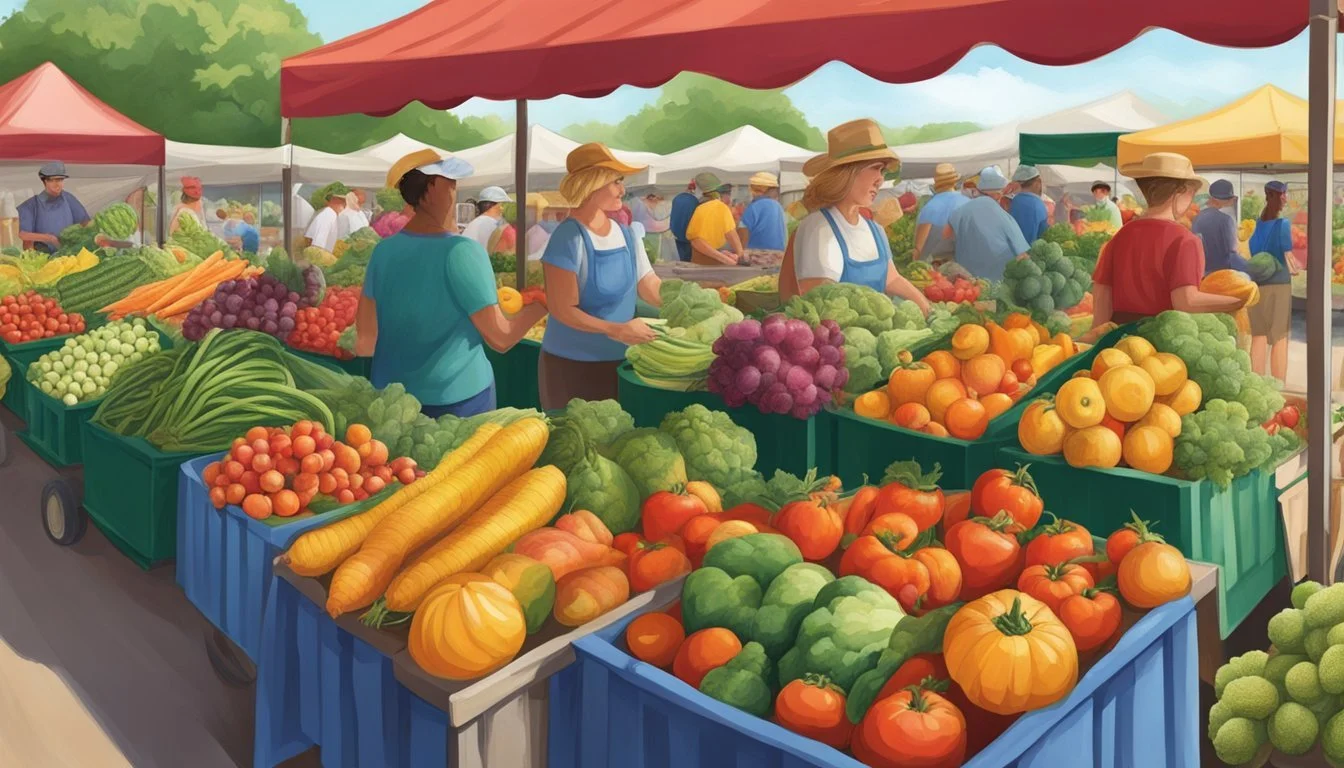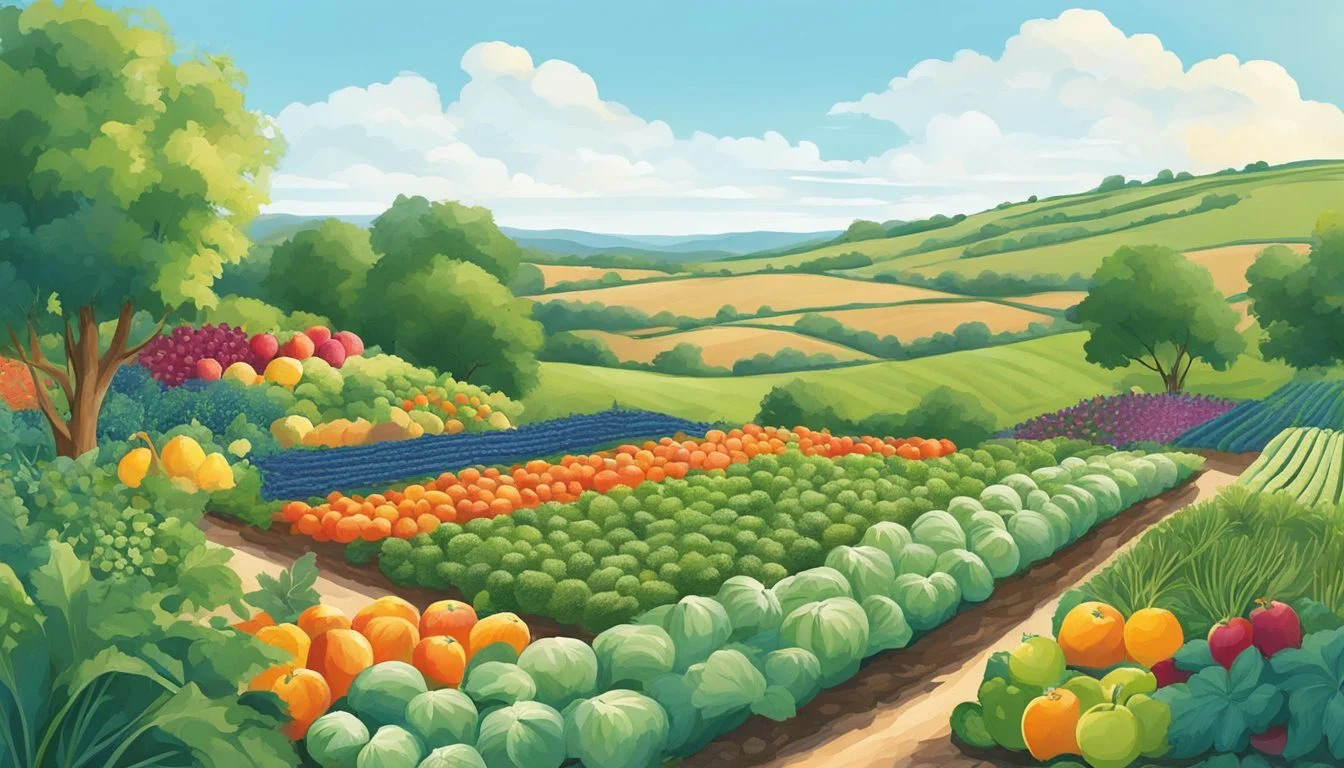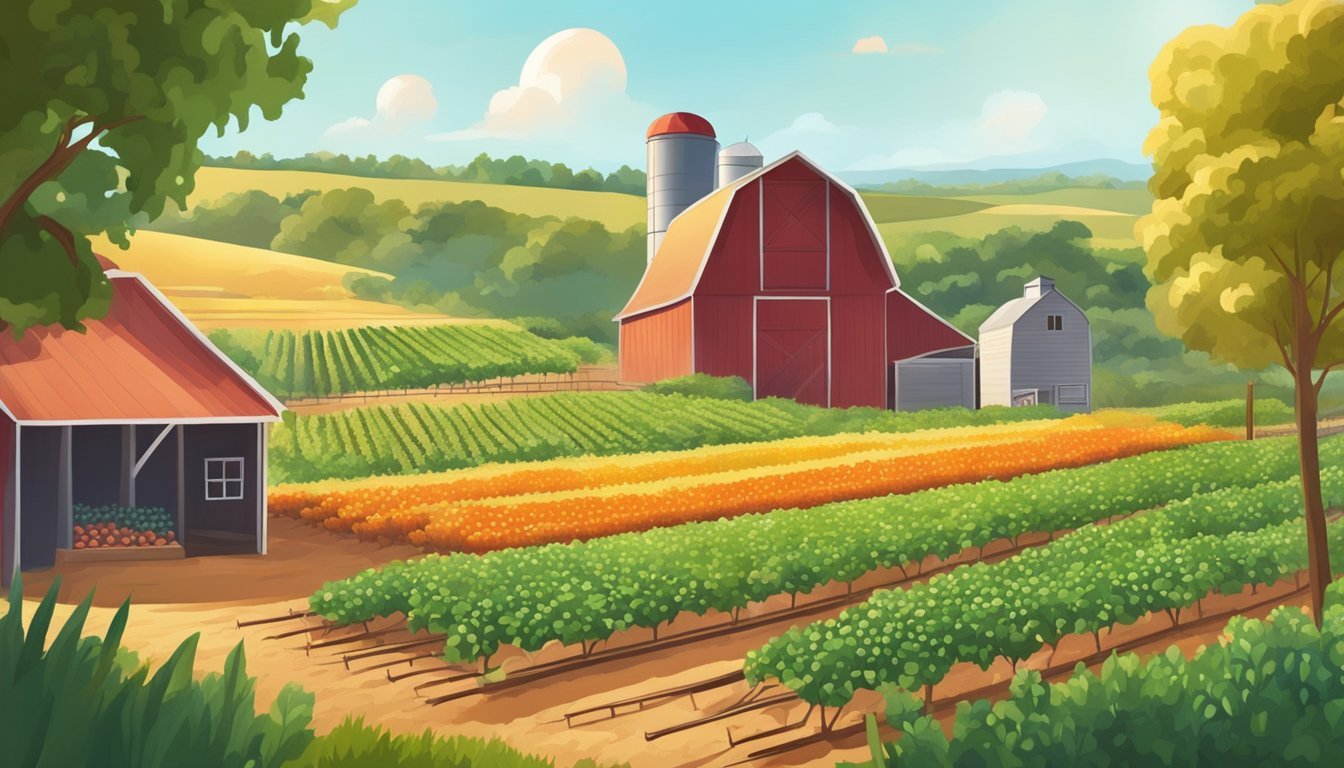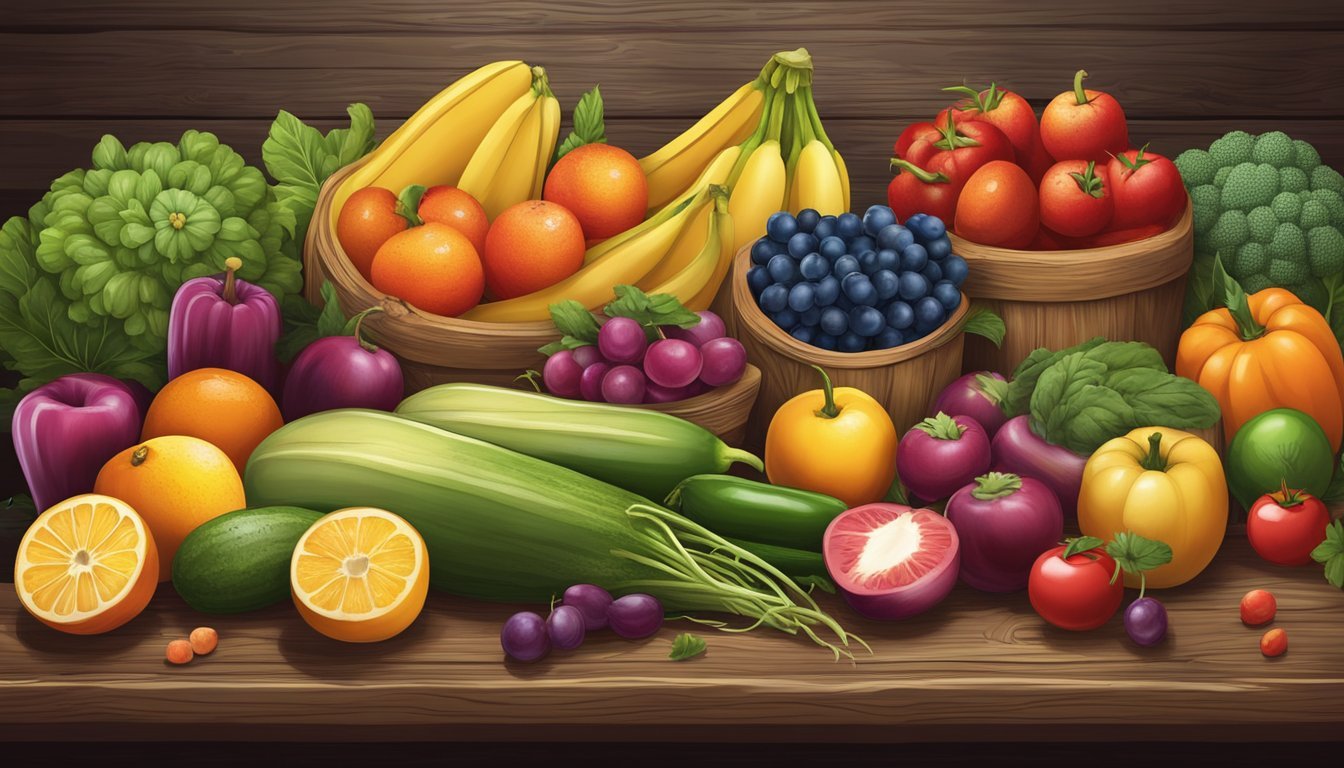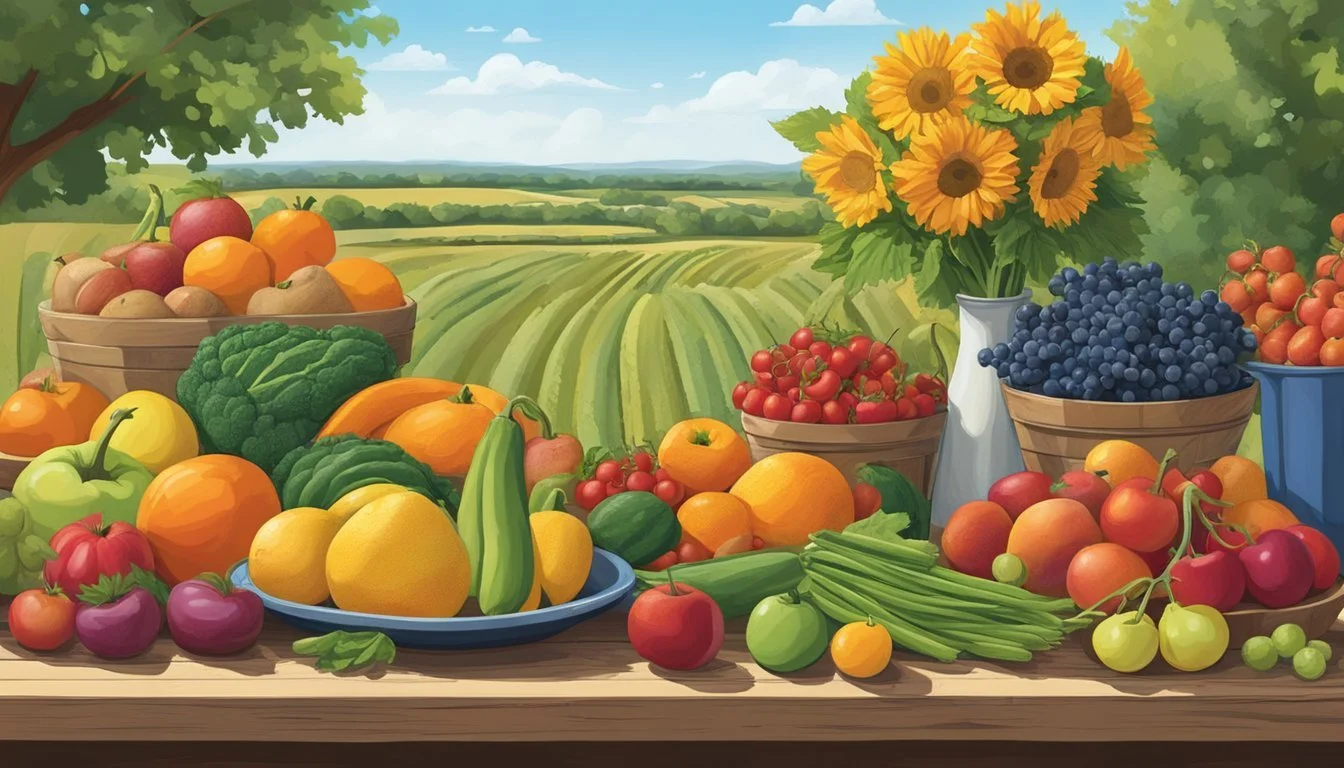Kansas Seasonal Fruit & Veg Guide
Your Ultimate Year-Round Companion
In Kansas, farm-to-table isn't just a culinary trend; it's a way of life deeply rooted in the rich agricultural heritage of the Sunflower State. With sprawling farms and dedicated local growers, Kansas offers an abundance of fresh, seasonal produce that makes its way from the fields to dinner tables across the state. The practice of eating locally and seasonally has an array of benefits, including supporting the local economy, reducing the carbon footprint associated with food transport, and offering residents and visitors alike a taste of the freshest fruits and vegetables at their peak of flavor and nutrition.
Navigating through the seasons, the Kansas Seasonal Farm to Table Fruit & Veg Guide serves as a beacon for both consumers and chefs striving to make the most of the state's bountiful harvests. As the seasons change, so does the produce selection, with each part of the year providing its own unique palette of flavors. From the crisp greens of spring to the vibrant berries and melons of summer, from the rich variety of autumnal squash to the hearty root vegetables that take center stage in winter, Kansas's agricultural offerings are as diverse as the state's landscape.
Understanding the seasonality of local produce helps in planning meals that are not only delicious but also in harmony with the environment. The guide enables one to pinpoint the perfect time to savor the sweetness of a freshly plucked peach or relish the earthy tones of a just-harvested beet. Through this knowledge, the people of Kansas can continue to foster a sustainable agricultural community that celebrates the natural cycles of growth and the pure, simple pleasures of eating food grown close to home.
What’s in Season in Kansas Right Now?
Understanding Kansas' Growing Seasons
Kansas' distinct seasons dictate the availability of local produce, guiding consumers on when to seek out fresh fruits and vegetables. Here, each season offers a unique harvest.
Spring Harvest
In Kansas, spring brings the first waves of seasonal produce. Strawberries often mark the onset of the fruit-picking season with some varieties ripening by the end of March. Other spring vegetables like lettuce, spinach, and radishes become available, providing a fresh start to the growing year.
Summer Bounty
Summer is the peak season when the selection of Kansas produce reaches its zenith. Tomatoes, peppers, and corn thrive in the summer sun from May through July. Blueberries, a summer fruit favorite, are best between June and August. This season is the optimal time for Kansas residents to enjoy a wide range of fresh, locally-grown fruits and vegetables.
Fall Collection
Fall in Kansas is characterized by cooler temperatures and a new variety of produce. This season sees the harvest of pumpkins, apples (how long do apples last?), and squash, which are staples for autumnal cooking. The fall harvest also includes a variety of greens, such as kale and collards, that can withstand the cooler weather.
Winter Considerations
While winter is more challenging for growing crops, Kansas producers still supply hearty vegetables that can endure the cold. Root vegetables such as carrots and potatoes are often available during the winter months. Indoor growing and greenhouse technology also allow for limited production of certain items like leafy greens during Kansas's colder season.
Planning Your Kansas Garden
Before planting a single seed, it’s essential for gardeners in Kansas to carefully select the right plants, create an effective garden plan and layout, and prepare the soil to ensure a fruitful harvest.
Choosing the Right Plants
The key to a successful Kansas garden lies in selecting plants suited to the region's climate. Gardeners should consider the local growing season and choose varieties known to thrive in Kansas’s weather patterns. For vegetables, one should look at plants like tomatoes, peppers, and leafy greens which are well-adapted.
Recommended Vegetables for Kansas:
Tomatoes
Peppers
Leafy greens (e.g., spinach, kale)
Root vegetables (e.g., carrots, beets)
Summer squash
Cucumbers
Garden Plan and Layout
A thoughtful garden plan and layout can maximize yield and ease of maintenance. Raised beds are a popular choice in Kansas for their ability to improve drainage and soil quality. A garden layout should include paths for access and consider plant spacing for optimal growth.
Garden Layout Tips:
Utilize raised beds to enhance drainage.
Arrange taller plants on the north side to prevent shading.
Include walking paths for easy access to all plants.
Soil Preparation and Improvement
Soil is the foundation of any garden. In Kansas, amending soil with compost can improve its fertility and structure. Testing the soil helps in determining the need for additional nutrients or pH adjustments. Mulching is also beneficial for retaining moisture and warding off weeds.
Soil Improvement Strategies:
Test soil to determine nutrient needs.
Amend with compost to enhance nutrient content.
Apply mulch to maintain soil moisture and temperature.
Spring Planting Guide
With spring’s arrival, Kansas gardeners prepare for planting, focusing on vegetables and fruits that thrive in the transition from cool to warmer weather. Timing, soil preparation, and proper selection greatly influence harvest outcomes.
Vegetables to Plant in Spring
Asparagus (how long does asparagus last?): Established asparagus crowns should be planted in early spring as soon as the soil can be worked. They prefer well-drained soil and can produce for years if maintained properly.
Onions: Mid-March is the ideal time to plant onions. Select sets or seedlings and ensure they are planted in rich, fertile soil.
Peas: These should be sown directly into the ground in early spring, as they tolerate frost and need cool temperatures to develop.
Carrots: Sow carrot seeds (how long do seeds last?) from mid-March to early April. Loose, sandy, and well-drained soil is key for their growth.
Radish: Plant radish seeds between March 15 and April 15. Radishes require consistent moisture for optimum development.
Fruits to Start in Spring
Rhubarb: Plant rhubarb crowns as soon as the ground thaws. Choose a sunny spot with high-drainage soil.
Strawberries: Mid- to late spring is perfect for planting strawberry plants. They need full sun exposure and well-drained, slightly acidic soil to flourish.
Summer Cultivation Tips
In the warm and bountiful summer months of Kansas, gardeners have the opportunity to harvest a variety of vegetables and fruits that thrive under the sun's ample rays.
Peak Summer Vegetables
Tomatoes and cucumbers flourish in Kansas summers, benefiting from consistent watering and mulching to retain soil moisture. Staking or using cages for tomatoes helps in supporting their growth and preventing diseases. Beans—both bush and pole varieties—should be sown directly into the soil and may require support as they climb. Plant sweet corn in blocks rather than single rows to improve pollination, leading to fuller ears. Summer squash prefers well-drained soil and should be harvested regularly to encourage a steady yield.
Tomatoes: Full sun, consistent watering, stake for support.
Cucumbers: Mulch to retain moisture, full sun.
Beans: Support for climbing, direct sow into warm soil.
Sweet Corn: Plant in blocks, require full sun.
Summer Squash: Well-drained soil, frequent harvesting.
Summer Fruit Favorites
For summer fruits, blackberries (how long do blackberries last?) and blueberries require well-prepared soil rich in organic matter. Blackberries need full sun and should be planted in rows, with a trellis system to support their growth. Blueberries require acidic soil with pH between 4.5 and 5.5, and consistent watering to avoid drying out. Melons, including cantaloupes (how long does cantaloupe last?) and watermelons, require space to spread and should be grown on raised rows or hills with plenty of sunshine to sweeten the fruit.
Blackberries: Full sun, trellis support, prune regularly.
Blueberries: Acidic soil, consistent moisture.
Melons: Space to spread, raised rows for good drainage.
Fall Harvesting Strategies
In Kansas, fall harvest strategies are vital for gathering seasonal produce at the peak of flavor and nutrition. Farmers focus on timed planting and protection against early frost to secure a bountiful yield.
Preparing for Fall Harvest
Kansas farmers begin preparing for fall harvest well before the crops mature. Timed planting ensures that vegetables such as beets and pumpkins reach maturity before the first frost hits. Here, soil warmth is a critical factor, as it aids in quicker seed germination and robust early growth. Farmers utilize forecasting and historical weather patterns to schedule planting, aiming to optimize the growing period. Protection methods, such as row covers, are sometimes implemented to shield sensitive crops from the cold and extend the growing season.
Key vegetables harvested in fall include:
Pumpkins: typically planted in late spring to early summer for October harvest.
Squash: planted by midsummer for harvest before frost.
Beets: sown in late summer to mature in cooler autumn temperatures.
Late Season Fruits and Vegetables
The late season fruits and vegetables in Kansas transition into fall with care to continue yield. Apple varieties reach their peak in the fall and can still be found fresh from storage well into the cooler months. Farmers harvest late-bearing apple varieties and utilize controlled environments such as cold storage to maintain freshness. Squash, being hardy, withstand frost to an extent, reflecting the traits of a successful fall vegetable. For crops like these, handling practices post-harvest are as important as the cultivation process to ensure they reach the table in prime condition.
Fruits and vegetables best suited for Kansas fall harvest:
Apples: harvested in late summer through fall, with storage extending availability.
Squash: varieties like acorn and butternut are harvested once fully matured in fall.
Pumpkins and Beets: benefit from the cooler temperatures and are typically ready for harvest throughout the fall season.
Kansas farmers combine their expertise with careful monitoring of the weather and soil conditions to manage fall harvesting effectively. The strategies implemented ensure that the fall harvest is both plentiful and of high quality, contributing to a robust farm-to-table movement in the state.
Winter Planning and Care
In Kansas, winter months are an ideal time for gardeners to plan and prepare their garden spaces. The gardener should focus on three primary care areas: soil preparation, plant protection, and winter planning.
Soil Preparation During winter, soil can be enhanced for the coming growing season. Gardeners should test their soil and amend it based on the test results. The application of compost during these months can significantly enrich the soil's nutrient content, setting a robust foundation for spring planting.
Mulching
Purpose: Mulching assists in retaining soil moisture and regulating temperature.
Method: Apply a layer of mulch after the soil has frozen to prevent thaw-freeze cycles that can harm plant roots.
Plant Protection Perennials, including certain vegetables and berry bushes, may benefit from mulching to shield roots from extreme temperatures. Straw or shredded leaves make effective mulch materials.
Winter Planning
Garden Layout: They should determine what and where to plant, considering crop rotation to prevent soil depletion.
Seed Selection: They can select seeds, considering factors like growth habit, space requirements, and hardiness.
Planting Schedule: Drafting a timeline for starting seeds indoors and transplanting can ensure a timely and efficient start to the growing season.
A gardener may also engage in tool care, sharpening blades, and oiling moving parts to ensure equipment is ready for use. By adhering to these practices, the gardener lays a strong foundation for a productive spring and summer garden.
Maintaining Healthy Crops
Achieving and sustaining healthy crops in Kansas requires diligent focus on integrated weed management, vigilant pest control, and proactive disease prevention initiatives. Nutrition is also pivotal, ensuring that plants have the essential nutrients for optimal growth.
Weed Prevention and Removal
Weed competition can drastically reduce crop yields by battling for water, light, and nutrients. Farmers adopt both cultural and mechanical strategies to manage weeds. Cultural practices include crop rotation and cover cropping, which suppress weed growth by altering the environment. Mechanical tactics involve tillage and hand-weeding to physically remove weeds. It’s critical to identify weeds early and remove them before they mature and disperse seeds.
Pest Management
Effective pest management hinges on identifying problematic insects and taking action before they multiply. Regular monitoring for insects such as aphids, beetles, and caterpillars is crucial. Farmers employ integrated pest management (IPM) combining biological controls, like introducing natural predators, with chemical applications used as a last resort. Physical barriers, such as row covers, are sometimes utilized to shield crops from insect damage.
Disease Control
Disease can be a significant threat to crop health, with fungi, bacteria, and viruses being the most common culprits. A preventive approach is vital, including choosing disease-resistant varieties and implementing proper crop rotation. Soil health is also a key factor in disease prevention; ensuring adequate nutrition and organic matter can bolster plant immunity. Farmers must stay vigilant for signs of disease to employ treatments swiftly, potentially involving targeted application of fungicides or bactericides when necessary.
Maximizing Flavor and Nutrition
To ensure peak taste and nutritional value, consumers should eat fruits and vegetables when they are in season. Seasonal produce harvested in Kansas typically has had more time to ripen on the plant, which enhances both its flavor and nutrient content. When consumed shortly after harvest, these foods are also more likely to retain their full spectrum of vitamins and minerals.
A key nutrient found in many orange and green vegetables is Vitamin A, which is vital for maintaining healthy eyes. For example, a medium-sized carrot procured during its Kansas peak season could provide a significant amount of this essential vitamin. Eating such vegetables fresh and in-season means the Vitamin A they contain has not been depleted by the long storage or transportation periods that off-season produce often undergoes.
Here is a simplified table highlighting optimal times to buy certain Kansas-grown produce for the best taste and nutritional benefits:
Season Fruits Vegetables Spring Strawberries Spinach Summer Cantaloupe, Watermelon Sweet Corn, Tomatoes Fall Apples Pumpkins Winter
Fresh produce not only contributes to the flavor and nutritional value of meals but also supports the local agricultural economy. By choosing locally grown, seasonal items, consumers are more likely to enjoy fresher, tastier, and nutrient-rich fruits and vegetables that benefit both their taste buds and their overall health.
Kansas Specialty Crops and Varieties
In Kansas, the agricultural landscape boasts a variety of specialty crops, each offering distinctive flavors and nutritional profiles. These range from aromatic herbs to unique fruits and vegetables, tailored for the state's varying seasons.
Herbs and Flavor Enhancers
Kansas farmers are well-versed in cultivating a range of herbs that add depth and complexity to dishes. Among these, basil stands out for its fragrant leaves, commonly used in a variety of culinary applications from pesto to fresh salads. Greens like arugula and kale are also prominent, offering peppery and earthy notes respectively. These greens are not only valued for their taste but also for their nutritional benefits. They can be found at local Kansas markets throughout their growing seasons, typically fresh and full of flavor.
Basil: Often found in community gardens and local markets from spring to fall.
Arugula: A cool-season crop that can be sown in both spring and fall.
Kale: Hardy and nutritious, kale is a staple in the cooler months and a popular choice for Kansas growers.
Uncommon Fruits and Vegetables
Apart from widely recognized produce, Kansas also nurtures an array of uncommon fruits and vegetables. These often include varieties not typically seen in the standard grocery store, providing a unique palette for the adventurous eater. The state's support for specialty crop growers fosters a rich diversity within local agriculture, allowing Kansas to offer unique produce options alongside traditional staples.
Uncommon Vegetables: Such as heirloom tomato varieties, multi-colored carrots, and diverse types of squash.
Uncommon Fruits: Including local berries, pawpaws, and persimmons when in season.
Farmers in Kansas are committed to delivering these specialty crops, ensuring a farm-to-table experience that introduces consumers to new tastes while supporting sustainable agricultural practices within the state.
Connecting with Kansas Farms and Markets
The vast agricultural landscape of Kansas offers a bounty of farm-fresh produce. The key to enjoying these offerings lies in knowing where to find local produce and understanding its seasonal availability.
Finding Local Produce
One can locate fresh produce by visiting Kansas farms or exploring one of the many farmers' markets across the state. Farmers' markets are not just outlets for fruits and vegetables; they also provide meats, dairy, and value-added products. In 2022, there were over 95 registered farmers' markets in Kansas, indicating robust opportunities to connect with local growers.
Registered Agritourism Locations: Tourists can visit working farms and ranches to experience agriculture firsthand.
Kansas Farm Food Connection: A resource that enables consumers to understand their food's journey from farm to table.
Understanding Seasonal Availability
Kansas farms yield a rich variety of fruits and vegetables, with the availability of specific produce depending on the season. Seasonal produce often comes with enhanced flavor and nutritional value. For example, strawberries and morel mushrooms signal springtime, while apples and pumpkins become abundant in the fall.
Spring: Asparagus, strawberries, morel mushrooms
Summer: Tomatoes, sweet corn, zucchini, peaches
Fall: Apples, pumpkins, winter squash
Winter: Storage crops such as potatoes and winter squash can still be found, though the variety is more limited.
Patrons should consult local harvest calendars for the most accurate and timely information on seasonal produce.
Resources for Kansas Gardeners and Consumers
Kansas offers a wealth of resources aimed at both seasoned and novice gardeners, ensuring access to fresh, local produce. Gardeners can turn to the Kansas Garden Guide for comprehensive advice, from garden planning to harvest. This guide has been updated to encapsulate the diverse experiences of Kansas's gardening community.
The Kansas State University Research and Extension provides a wide array of tools and educational materials, such as online courses like Victory Garden 101, designed to suit Kansas's specific agricultural conditions. These resources outline best practices for a variety of fruits and vegetables suitable for Kansas's climate.
For Farm to Table enthusiasts, resources extend beyond gardening tutorials to include information on local produce availability. The What's Growing? Kansas Produce Calendar by Farm Flavor is instrumental for consumers seeking to purchase seasonal local produce. This calendar informs consumers about the peak availability times for Kansas produce, fostering informed shopping decisions that support the local economy.
Local extensions offices throughout Kansas serve as a node connecting consumers and gardeners with high-quality seeds, saplings, and a hub for exchanging farming tips. They also organize community events to celebrate and educate about Kansas's agricultural bounty.
To summarize, Kansas residents benefit from a robust network of resources that not only guide them in growing their own fresh produce but also in making informed, local, and seasonal food choices. Here is a short list of resources:
Educational Resources:
Kansas Garden Guide
Victory Garden 101 classes and resources
Local Produce Information:
What’s Growing? Kansas Produce Calendar
Community Support:
Local county extension offices
Online Platforms:
K-State Research and Extension website


